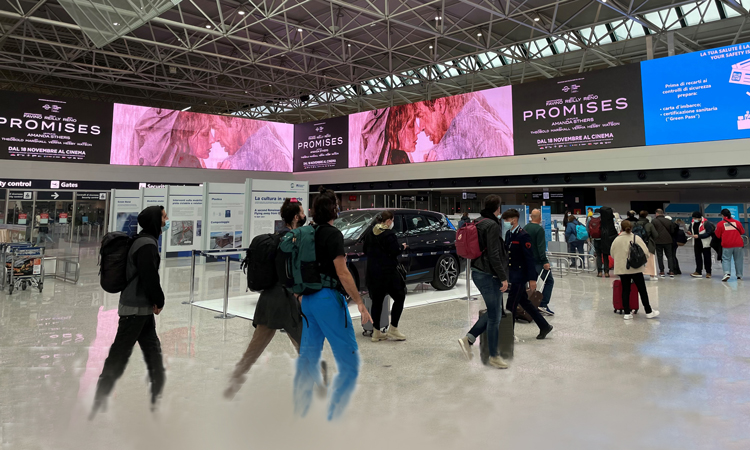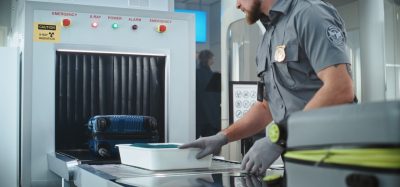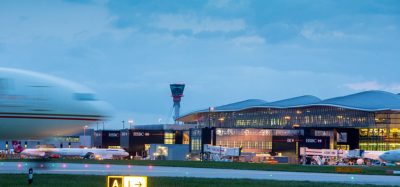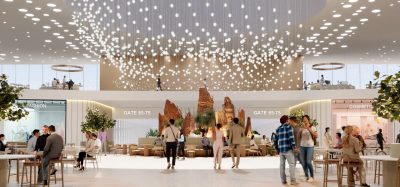The way we see innovation
Posted: 18 March 2022 | Giulio Ranucci | No comments yet
Giulio Ranucci, Head of Innovation & Digital for Aeroporti di Roma, outlines the operator’s newly launched innovation model and shares the exciting projects that they have been working on.


Innovation is a fundamental value of Aeroporti di Roma’s (ADR S.p.A.) mission, which over the last year has consolidated and strengthened its strategic direction, promoting a corporate culture of innovation through the definition and implementation of a new open innovation model with the objective of strengthening innovation, digitisation and environmental sustainability of airports and industry.
This pandemic has assuredly accelerated the strategy and deployment in terms of innovative projects aimed to enhance customer experience, in particular to avoid physical contacts, but at the same to reshape the way we see our infrastructure, with start-ups having a key role in terms of unique ideas and possible new business cases.
The innovation model proposed by ADR, in fact, aims to be inclusive at 360 degrees: it involves start-ups, universities and SMEs, aiming at a review of business processes and work profiles, enhancing the cultural component.
Join us live: Shaping the Next Generation of Hold Baggage and Air Cargo Screening
Join us live for an insightful webinar on 11th December at 14:00 GMT, in collaboration with Smiths Detection, as we explore the strategic balance of operational efficiency, regulatory compliance, and sustainability in high-volume security environments.
This session offers a focused look into future-proofing your security strategy.
Key learning points
- Cost Reduction: Strategies to minimize bag travel time while simultaneously reducing operational costs.
- Regulatory Roadmap: Insights into the next wave of regulatory changes and their impact on future investment decisions.
- Sustainable Systems: Practical approaches to building sustainability into security systems and lowering the total cost of ownership (TCO).
- Scalable Solutions: Real-world examples of scalable systems supporting current airport growth and preparing for tomorrow.
Register now for expert insights, case studies, and actionable strategies on operational efficiency!
To implement its innovation strategy, ADR has entered into agreements with:
- Plug & Play, a world-class player in the open innovation sector, to increase scouting capacity (involving universities, corporations, investors, start-ups) and reduce time-to-market of new ideas
- LVenture, an Italian player very present in Europe, with great experience in the management of physical spaces to incubate/accelerate start-ups Space to innovate In Terminal 1, 2022 will see ADR create the first corporate vertical incubator in the aviation sector, a 600m2 Innovation Hub to facilitate the identification and development of new digital solutions, with the aim of investing in start-ups.
The ‘call for ideas’ launched proposes six different areas of work, six challenges for the innovators of the future:
- Improving flight punctuality and increasing airport capacity
- Creation of data driven systems for planning and real-time management of airport spaces
- Projects aimed at reducing energy consumption and increasing energy from renewable sources
- Identification of new services dedicated to enriching the passenger digital experience
- Automation of processes and controls within the airport
- Solutions dedicated to omnichannel commerce.
During the five-month incubation period, the selected start-ups will have the opportunity to collaborate with the innovation cabin crew team – the 30 innovators within Aeroporti di Roma – in order to have constant support in the growth of the project, also guaranteed from ADR’s economic investment.
ADR will guarantee support of €65,000 to each of the selected start-ups, demonstrating how initiatives related to innovation are, together with sustainability, a central theme of the corporate strategy and cornerstone of the vision.
The journey of innovation
ADR began implementing its Open Innovation strategy in 2020, with the organisation of a hackathon in collaboration with the BEST association of the University of Tor Vergata. It then set up the innovation cabin crew within the company and developed national partnerships with players of the calibre of ENI and ENEL and international partnerships, such as the one with Aena, with which ADR created the Airports for Innovation network.
Call for ideas
The launch of the first call for ideas establishes the path of our strategy focused on innovation. Starting from the hackathon, moving onto the implementation of the new operating model aimed at promoting the innovation culture, up to the identification of a series of innovation ambassadors (the innovation cabin crew) and the signing of international collaborations through the new network Airports for Innovation. We are now ready for the next step: engaging start-ups by investing €390,000 in their ideas, sharing our expertise and focusing on the development of their projects within our Innovation Hub, located in Terminal 1 of the Leonardo Da Vinci International Airport.
Our new model of widespread innovation results in a pool of excellence aimed at enhancing local and territorial skills by attracting start-ups from all over the world, who will have access to a unique opportunity to develop their ideas directly in an industrial hub dedicated to the aviation sector.
The results are more than 140 projects from 98 companies from around the world on six different topics.
In addition, we have deployed different iconic projects that already embrace our new way to see infrastructure and travel in general.
Biometrics
Our first intercontinental and COVID-tested corridor, totally contactless and identical both ways from Rome to Atlanta and vice versa, enables a safer and quicker boarding experience.
Launched in July 2021, by ADR and Delta Airlines, the new boarding procedure for the Rome-Atlanta route is characterised by biometric face detection. Departing passengers can now make their entire journey quickly and safely through the airport without having to repeatedly show their documents or boarding pass.
Furthermore, this new boarding procedure acquires even more value in terms of containing the contagion from COVID-19, allowing an entirely touchless process. The system provides for the installation in specific airport areas of equipment (check-in; passenger track security checks; boarding gates) that detects the biometric characteristics of passengers and temporarily acquires the information contained in their ID and boarding passes.
Improving passenger communication and information
In May 2021, ADR introduced a new layout and functionalities to provide flight information to passengers: the possibility to track a flight directly from their smartphone without the need to be physically in the airport. In addition, our Flight Information Display System (FIDS) has been updated both in terms of graphics and ICT architecture. We introduced a clearer and more attractive graphic layout (added airline logos), greater flexibility and speed in the creation of non-standard content (passenger communications, videos, photos, etc.)
Lastly, we have updated the ADR website, with a new graphic layout, making it clearer and more intuitive, as well as adding the flight tracking function (both departing and arriving), with the possibility of receiving real-time updates via email.
Digital signage and new LED wall
To enhance customer experience, we introduced digital totems inside the airport, for complete digital assistance.
Passengers can ask for information by interacting with the totems through a touchscreen and by making a call with operators. This represents the first step of our automation strategy aimed to deliver a better user experience. Furthermore, we have been able to achieve savings of 12.8 FTEs, that we destinated for other core activities.
In June and July 2021, we introduced two fully custom LED walls. The first is an immersive tunnel through which departing passengers can go through pier Extra Schengen. The second is the biggest LED wall in the airport sector in Europe – 200m long and measuring 600m2 – that plays fully-motion video and flight info, giving the passenger a sense of place, as well as a unique digital effect.
In addition, the LED wall plays customised media content made by the students of an Italian Academy of Art, focused on images and visual inputs strongly linked to the Italian territory for travel, art and food, called ‘Italian Stories’.
Digital out of home
ADR has improved customer experience by introducing customised real-time media content with programmatic digital out of home advertising. This technology allows you to insert multimedia content programmatically using physical sensors on the screens. Thanks to integrated OTS (opportunity to see) technology, it is possible to garner insights into how many people are next to the outdoor screens and the ‘type’ of cluster to which they could belong (e.g. single traveller / groups etc.), so passengers can receive customised media content. For instance, a businessman would see SKY News 24, while a family would see a toy advertisement.
It is clear to see the culture of innovation is strong at ADR, promising a bright future for the passenger experience.


The International Airport Summit is open for registration!
Date: 19 – 20 November 2025
Location: JW Marriott Hotel Berlin
At our flagship event of the year, we will dive into the future of airport operations, with expert-led sessions on passenger experience, innovative smart technologies, baggage handling, airside operations, data, security, and sustainability.
This is where global airport leaders come together to share insights, challenges, and real-world solutions.
Limited complimentary passes are available for eligible professionals – first come, first served!
Issue
Related topics
Airport development, Biometrics, Communication Technology, Contactless / Touchless technology, COVID-19, Cyber-security, Digital transformation, Passenger experience and seamless travel, Security, Sustainability, Sustainable development


















